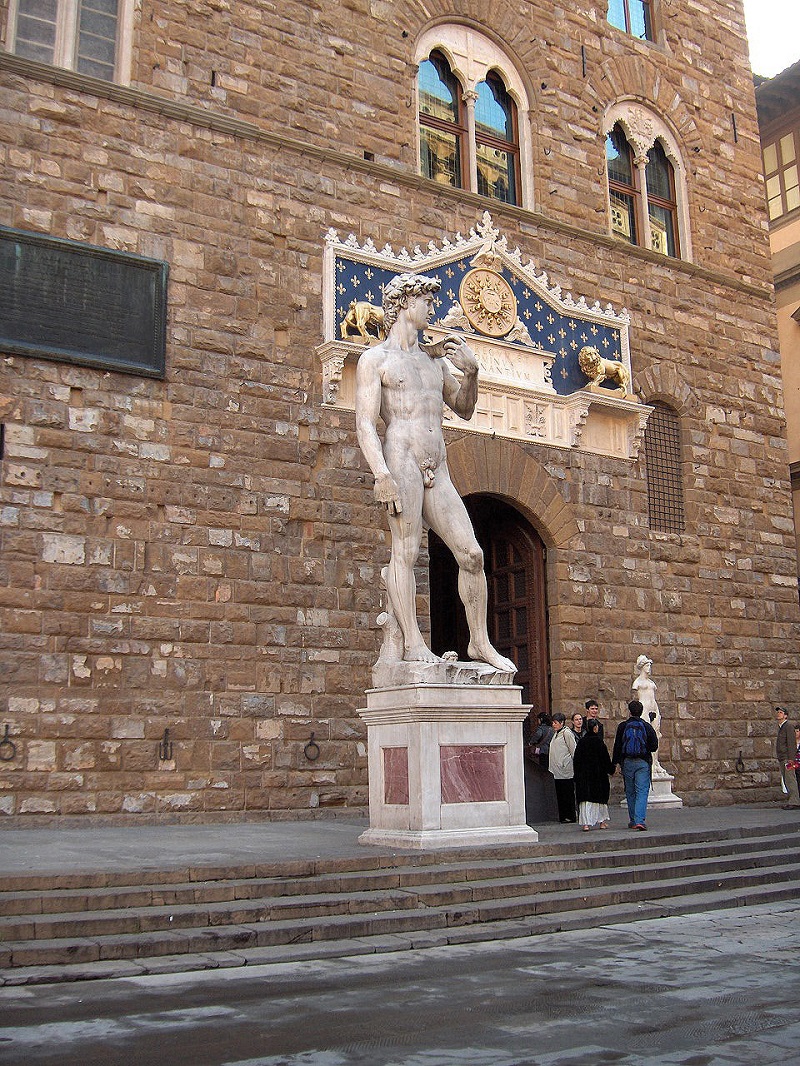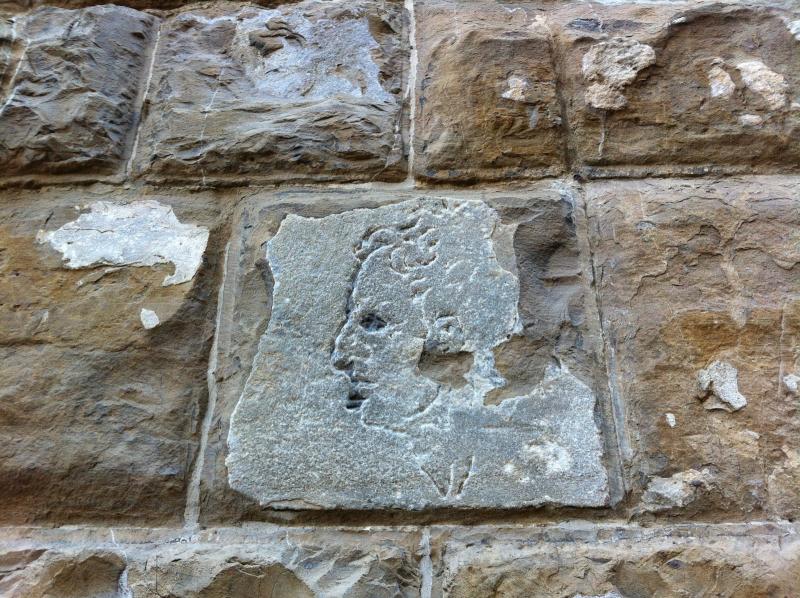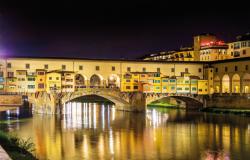Photo by: 055Firenze.it
Love it or loathe it there’s no escaping from graffiti and though many people think it’s the scourge of modern society the truth is that it has been around since ancient times. It was present in both ancient Greece and Egypt and there’s examples of graffiti on buildings in Pompeii and within Rome’s catacombs.
Etched into the ancient stones of Florence’s historic Palazzo Vecchio is a simple piece of celebrated graffiti known as the, L’importuno di Michelangelo, or commonly, Michelangelo's Graffiti.
Situated on the corner nearest the Uffizi Gallery is the face of a man, a simple outline carved into the stonework that has intrigued people for centuries; because despite claims that this carved silhouette was created by the sculptor Michelangelo, there’s actually no tangible evidence that it can be attributed to him, only hear-say.
 But hear-say never stood in the way of a good story, and there’s many linked to this simple piece of illegal decoration that some say is testament to the sculptor’s voracious desire to create. Michelangelo returned to Florence in 1499 and began work on his most famous sculpture, the Statue of David, completed in 1504 and one story linked to the L’importuno is that during this time he was out walking when a condemned man was being led through the streets to the gallows and his face so moved Michelangelo that he carved it into the Tuscan brick.
But hear-say never stood in the way of a good story, and there’s many linked to this simple piece of illegal decoration that some say is testament to the sculptor’s voracious desire to create. Michelangelo returned to Florence in 1499 and began work on his most famous sculpture, the Statue of David, completed in 1504 and one story linked to the L’importuno is that during this time he was out walking when a condemned man was being led through the streets to the gallows and his face so moved Michelangelo that he carved it into the Tuscan brick.
Another claim surrounding its origin is that he was challenged to deliberately deface the stonework and to get away with this wanton act of vandalism he carved it with his knife hidden behind his back. The knife behind the back theory has also led to another tale of his creating the etching, it is said that as he was held in conversation with a passer-by who bored him so much, he doodled his companion’s likeness without his knowledge as he chatted away inanely.
Whether the small face is an act of civil disobedience by one of Italy’s greatest artists or a simple scribble by an unknown vandal is now irrelevant, as history has secured its place in the hearts of many Florentines and tourists alike.








